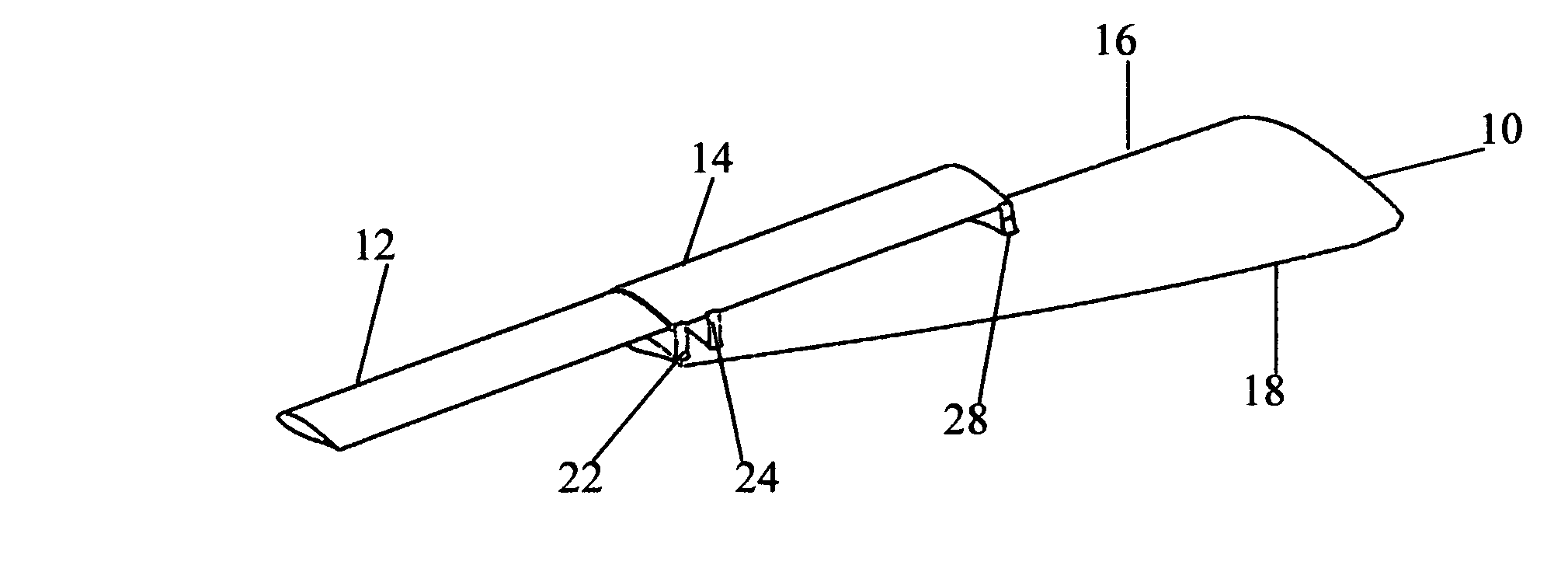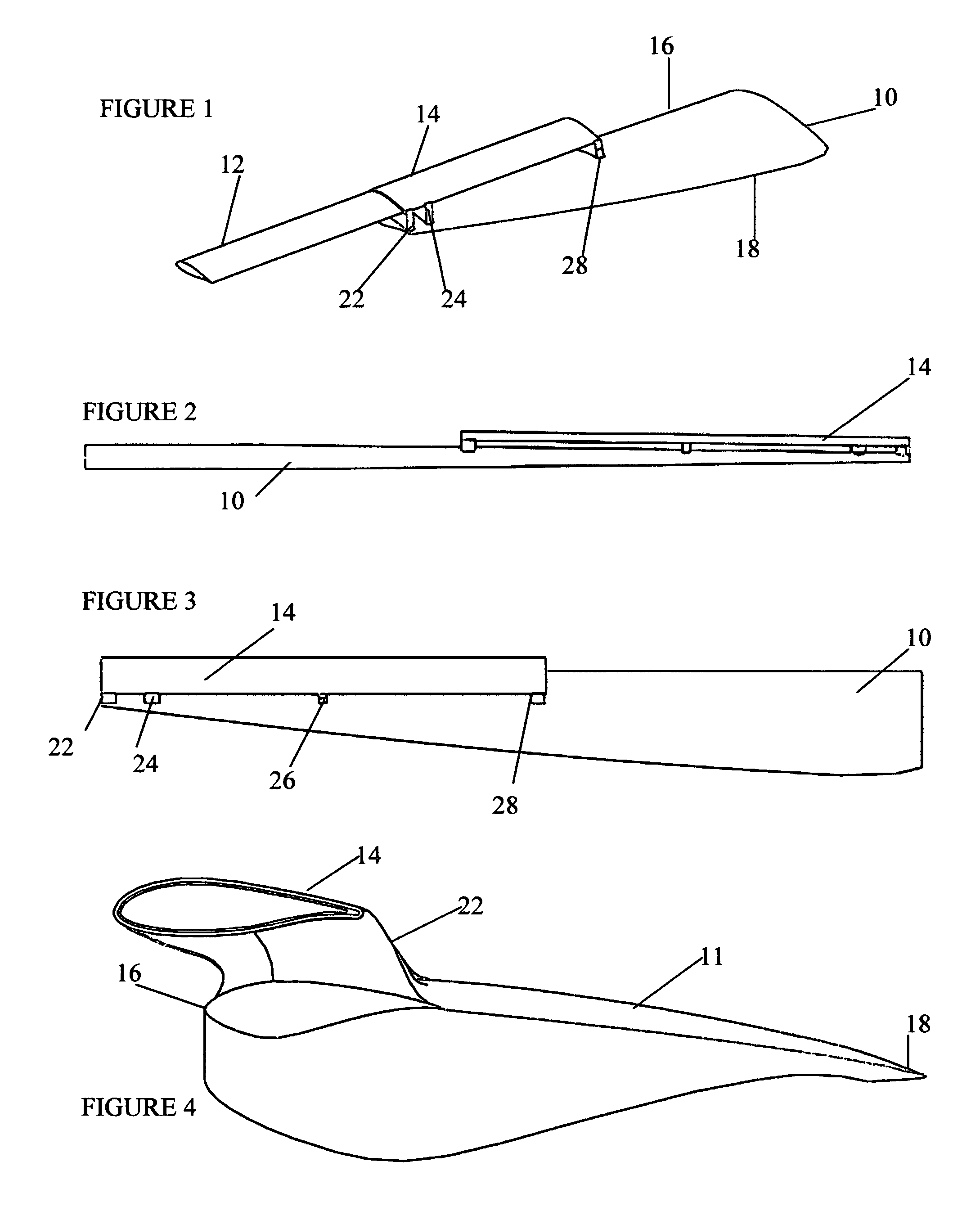Extendable rotor blades for power generating wind and ocean current turbines within a module mounted atop a main blade
a technology of extension rotor and turbine, which is applied in the direction of mechanical energy handling, mechanical equipment, machines/engines, etc., can solve the problems of large chord, inability to address the requirements of wind or ocean current applications, and inability to address the bielawa patent, so as to avoid fatigue failure, facilitate maintenance, and avoid the effect of weakening the main blade structur
- Summary
- Abstract
- Description
- Claims
- Application Information
AI Technical Summary
Benefits of technology
Problems solved by technology
Method used
Image
Examples
Embodiment Construction
[0049]A wind power-generating device includes an electric generator housed in a turbine, which is mounted atop a tall tower structure anchored to the ground. The turbine is free to rotate in the horizontal plane such that it tends to remain in the path of prevailing wind current. The turbine has a rotor with variable pitch blades, which rotate in response to wind current. Each of the blades has a blade base section referred to as a root blade attached to a rotor hub and a blade extension referred to as an extender blade that is variable in length to provide a variable diameter rotor. The rotor diameter is controlled to fully extend the rotor at low flow velocity and to retract the rotor as flow velocity increases such that the loads delivered by or exerted upon the rotor do not exceed set limits. The power-generating device is held by the tower structure in the path of the wind current such that the power-generating device is held in place horizontally in alignment with the wind cur...
PUM
 Login to View More
Login to View More Abstract
Description
Claims
Application Information
 Login to View More
Login to View More - R&D
- Intellectual Property
- Life Sciences
- Materials
- Tech Scout
- Unparalleled Data Quality
- Higher Quality Content
- 60% Fewer Hallucinations
Browse by: Latest US Patents, China's latest patents, Technical Efficacy Thesaurus, Application Domain, Technology Topic, Popular Technical Reports.
© 2025 PatSnap. All rights reserved.Legal|Privacy policy|Modern Slavery Act Transparency Statement|Sitemap|About US| Contact US: help@patsnap.com



